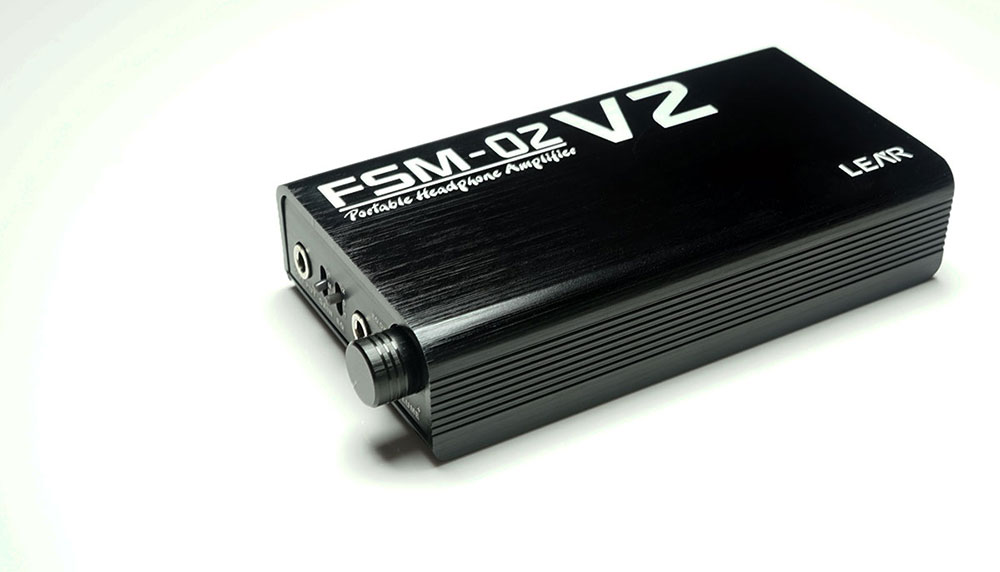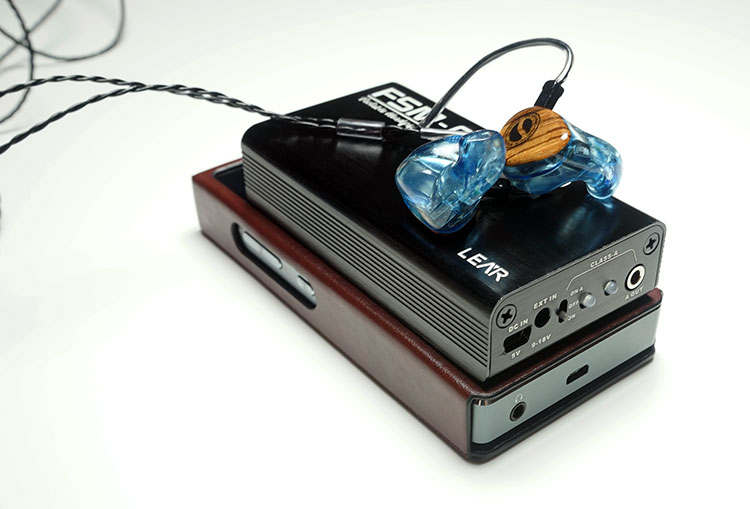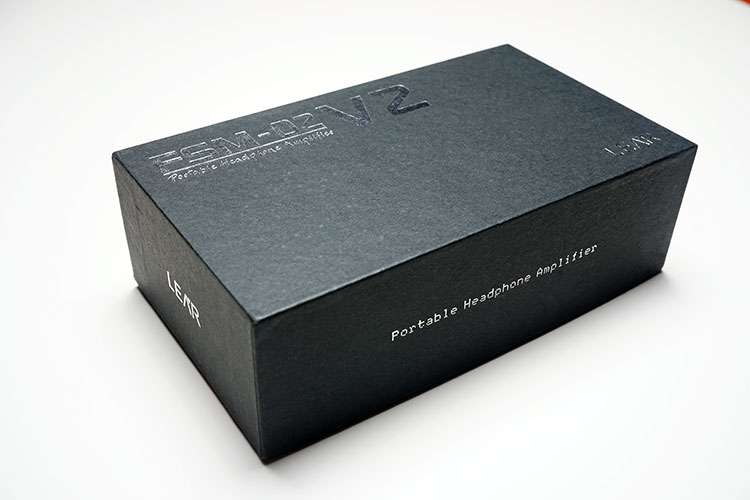Sound Impressions
Tonality
The FSM-02 V2 offers a musical yet natural and almost valve-like tonal presentation, especially when opting for the Class A output. Under normal amping conditions, the tone is a bit cleaner and not quite as thick sounding and closer to neutral.
Of the two sounds, it’s probably the more balanced option. The only area I am not as fussed on is the lower treble performance which at times sounds a little brittle in how it presents percussion work particularly high hat and cymbals though pairing with warmer cans or earphones can negate that somewhat.
Class A takes it into that valve amp experience providing for increased dynamics, a richer thicker and more spacious sound in the mids, and yet still retaining a solid-state low-end slam. The presentation is more vivid and engaging as a result and, with careful source matching, provides for a more compelling musical experience with headphones and harder to driver IEMs.
Hardware EQ
Judicious use of the hardware EQ will alter the stock sound of each setting, though pairing at both source and headphone level will ultimately determine if the adjustment has benefits and it does vary. If you remember earlier, Lear claims that you can achieve up to 6 different types of tonality with the V2.
That does ring largely true in testing but with varied results during matching. EQ1 (bass boost) on normal mode you get a more musical colored low end with an increased mid-bass emphasis that can dominate with excellent effect in headphones such as the K812 and the oBravo ERIB-5a planar.
Both of these produce excellent slam, well-controlled, and sound very musical without muddying the rest of the range. However, on planar such as the HE400s it sounds too bloated, almost distorted, and lacking in definition.
Switching to EQ2 will lift the treble a bit further forward with an increase in perceived top-end clarity and a more subdued low end.
It has a thinner note, perhaps a little too thin for some pairings in normal amp staging but with the valve-like Class A combination it does sound more natural and teases out a bit more lower-treble energy with headphones and earphones that suffer from a top-end roll-off or an overly relaxed treble response.
Synergy
Efficiency
Although an impressive performer for background noise and hiss the FSM-02 V2 gain level is simply too high, even on low gain, for pairing with the latest generation of ultra-efficient IEMs such as the SE846 and the Campfire Audio Jupiter using any sort of pure line out on most major DAPs except the Sony Zx2.
Whilst tonally there are some stellar pairings, particularly the Lotoo Paw Gold, the FSM-02 V2 gain stage is better suited for double amping (headphone out) rather than using a line out (unless you can control volume also via the source).
You will get better micro-volume control via double amping than purely line out which, in many instances, tops out at just 5-6 steps on the attenuator with most DAP LO signals.
Channel imbalance is more noticeable also on efficient IEMs with most DAPs showing a strong imbalance around step 3. Step 4 on the attenuator brings in the balance but at the cost of a big jump in gain which might be uncomfortable for some.
The situation changes somewhat when you introduce less efficient earphones or headphones. Earphones such as the 32 ohms Astrotec Lyra 6 or Noble 4C and the power-hungry planar oBravo ERIB-5a via line-out.
All three have double the play that the Jupiter and Se846 offered allowing up to 10-11 steps on most of the DAPs and a good bit more on the Sony ZX2. Whilst it is not a huge jump the level of control over gain and volume is significantly easier to manage.
Power
Dynamic Performance
The FSM-02 V2 has plenty of power in the tank to drive dynamic headphones and efficient planars. Dynamic flagship headphones such as the K812 were well within the reach of the FSM-02 V2 at just 15-16 steps or approximately 11am (high gain) on the volume pot.
I enjoyed the K812 more with the Class A output with bass boost 1, tons of musicality, heavy bass, but still well controlled and excellent for EDM. Treble was still a bit uneven, not much the V2 can really do with that but it didn’t feel as amplified with this pairing over say the Cayin N5 output which was just painful.
The lower treble still has a bit of peakiness but the rest of the frequency was very smooth and musical.
Planar Performance
The FSM-02 V2 also had no driving issues from efficient planar headphones such as the HE400s and the slightly more demanding HE400i from Hifiman with both hitting their volume sweet spot on high-gain at around 11am and dropping only a few steps on medium-gain at around noon. Even using low gain was fine around 1pm for the HE400s and just slightly higher for the HE400i.
Once again the Class A amp section sounded a little richer with better dynamics for rock which the HE400S loves but combined with the bass boost it does sound a bit overblown with poor definition.
Even more demanding planars such as the LCD-2 sounded confident and clear with the FSM-02 V2 on the Class A high gain around 12 noon though nowhere near as visceral and immersive as powerhouse portable amps such as the Bakoon HPA-01M. Just a tiny touch of lower treble harshness on the normal amp stage I was not too keen on.
Source Pairings
Shanling M5
Channel balance is left focused on the 3rd step of the analog pot which is often a curse for analog pots but slightly more so for the Lear with sensitive IEMs which start with a relatively higher level of audible volume with the FSM-02 V2.
For the likes of the Campfire Jupiter, even on the low gain with no EQ, the gain levels of the V2 are simply too powerful with step 2 left channel dominant, and by the time you get to step 7, it is simply too loud (line out from Shanling M5).
There is very little “wiggle” movement with this pairing. The Jupiter would be better matched with the DAP alone or a more efficient amp such as the RX for better gain and volume control.
This was a natural and full-sounding tonal pairing with excellent imaging. The midrange is smooth, the instrumental timbre is accurate and vocal presence and control are excellent.
If I am to nitpick there is a slight lack of sparkle in the upper treble with the M5/FSM-02 V2 pairing in comparison to the FiiO X7. It’s still excellent detail but not the most energetic without resorting to that hardware EQ option.
You can tease it out a bit more with the treble boost but you will lose a little low-end weight in return. Class A/EQ 1 was about the cleanest pairing for those who want more treble sparkle without losing too much low end. The bass boost option works better with IEMs such as the planar oBravo ERIB-5A which responds with a lot more control despite the gain boost.
Sony ZX2
Slightly weaker line out than the Shanling M5, but that suits this pairing better with efficient earphones and the FSM-02 V2. You get more play in the pot with up to 11 to 12 steps though you still get channel imbalance at 3 steps but sounding just a little more muted. There is still not a huge amount of volume range to be perfectly honest but it is more workable than the M5.
In normal amp mode, the ZX2 performed quite well with the FSM-02 V2 with a lively low end but otherwise remaining relatively neutral and detailed signature compared to the Lotoo Paw Gold, N5, and the Opus#1. I found I had no real need to switch to the EQ options and mess around with a presentation.
The Class A output was excellent with a slightly smoother more natural-sounding presentation and a richer midrange that suited rock vocals to a tee.
Cayin N5
Once again channel impedance is detectable on the left channel on step 3 on the analog pot. Much like the M5 the line out is perhaps too strong for efficient IEMs to have any control over gain and volume. The maximum volume is around 5-6 on low gain, though tonally it sounds a beautiful pairing. Just a pity I can’t have a more efficient setting.
Props to this pairing for producing a very musical and fun-sounding presentation with the stock setting. The sharp edge of the N5 is less evident and in comes a full-sounding low end with a nice mid-bass impact and clear vocals.
As with other DAPs, the switch to the treble boost using the Class A will bring out some more top-end sparkle and enhanced dynamics that at times I really enjoyed this pairing actually with earphones such as the Lyra 6 or the Cypher Labs C6IEM v1. Bass EQ though was overblown and too warm with a loss of balance to make it worthwhile.
FiiO X7
Higher audible gain from the first step, though channel imbalance comes in a lot earlier on steps 1/2 and thus less audible. Minor channel imbalance by step 3, much less so than the other DAPs. There is a huge jump moving to step 4, with step 5 being perhaps the maximum volume with the FSM-02 V2 using efficient IEMs such as the Jupiter and SE846.
Loaded with the AM5 the FSM-02 V2 pairing was an excellent balance between clarity and musicality with a visceral low end, full sounding but balanced mids, and a natural treble performance with good extension. Of the DAP’s reviewed the X7/AM5 had the best balance between musicality and clarity but perhaps just behind the M5 vocal performance which to me was incredibly lifelike.
Opus#1
Opus#1 has no line-out option so setting the volume at 100 digital steps on the DAP in line with recent reviews. Channel imbalance became evident again on step 3, then a milder jump on step 4 compared to those DAPs using a line out until a max volume level of 10 steps using efficient IEMs.
Tonally I felt something was missing from this pairing. That level of sparkle and detail seemed washed out with a very flat presentation and little in the way of top-end sparkle, space, and depth.
Using the hardware EQ with the treble boost improved things in terms of clarity and space, but at the same time, bass performance and the beefy lower mid-range fell away a little too much leaving the response a little uneven.
Class A out brought some additional but possibly unwelcome warmth to an already very soft presentation. Personally, this pairing brought nothing to the table in terms of clarity and extension paired with the FSM-02 V2. If I was forced to choose it would be EQ 2 and normal amping only with the FSM-02 V2/Opus#1 pairing.
Lotoo Paw Gold
The gain control at low volume is excellent, slight channel imbalance at step 3 in the FSM-02 V2 and again that larger jump on step 4. No hiss or background noise throughout.
The line out though is the same as the other DAPs with a rather abrupt ending at 5-6 steps on the Lear with efficient IEMs. Line outs are simply too high in gain combined with the Lear for the likes of the Jupiter and similar ultra-efficient IEMs.
Tonally this pairing sounds clean, clear, precise, and very natural with less efficient earphones and headphones using the normal amp circuit and smoother, more tube-like with the class A out.
Given the already superb smooth yet detailed sound the Paw Gold offers I actually preferred the normal output stage over the Class A without any use of the EQ just for that more neutral and cleaner sound. It is a game of preference as both offered excellent detail.
Throw in some treble boost and you have a neutral to a slightly bright signature but still sounds very controlled and refined. Treble heads should enjoy this EQ/normal or Class A amp combination with the Paw Gold. The bass boost didn’t work for me as well with this pairing sounding too warm and pushing the bass too far at the cost of mid and top-end performance.
Select Comparisons
ALO Audio RX
The RX is a smaller and more efficient amp that pairs better with ultra-efficient IEMs such as the Campfire series, Oriveti Primacy, and Shure’s SE846 in terms of gain control.
This is a case of less is more. For less efficient setups, say 32 ohms upwards, on IEM’s the RX and the normal amp stage of the FSM-02 V2 with all EQ switched off sounded more alike than distant cousins with a similar neutral and clean sounding tonality that sounds reasonably balanced across the range.
Both have excellent dynamics, churn out accurate and big soundstages with the only difference for me is in the lower treble and upper midrange where, for me, the RX just sounds that little bit smoother and more natural sounding with percussion work but it is slight.
Switching to the Class A output on the FSM-02 V2 and things tilt in their favor with a richer, smoother tonal presentation and a fuller-sounding musical low end. Vocals do take a very slight back step presentation-wise given the increase in bass body but overall the Class A V2 is a creamier sounding alternative to the big sounding but more neutral RX.
Cypher Labs Picollo
Much like the RX, the Picollo is more adept at dealing with modern IEMs with a greater range of gain and volume control than the FSM-02 V2. The Picollo also has a slightly darker and more intimate presentation compared to the FSM-02 V2 set to the normal amp stage and all EQ switched off.
The low end on the Picollo is also a bit fuller sounding than the FSM-02 V2’s more neutral bass response and much like the RX is has a slightly more natural-sounding lower treble albeit slightly more rolled off.
Switching to Class A on the FSM-02 V2 I still think the Picollo has a slight edge in low-end weight, but this time, the FSM-02 V2 projects a wider soundstage with superior dynamics and imaging.
iBasso P5
The P5 is a bit of a leap in price over the FSM-02 V2 and is equally adept at modern efficient IEMs as well as more power-hungry headphones.
It also comes stacked with a separate DC power unit, unlike the FSM-02 V2which packs on the inside. Call that an advantage or drawback depends on how you view portable devices but certainly, the V2 is the smaller of the two in that respect. The FSM-02 V2 in normal amp mode doesn’t quite have the chops to keep up with the P5 sounding thinner, slightly less natural, and less dynamic.
Class A output performance closes the gap impressively to the P5 performance though I would still say the P5 has a very slight edge with a smoother and more refined upper midrange and lower treble performance which, to be honest, after countless hours of listening to the FSM-02 V2 is perhaps its weak spot.
Our Verdict
Three years ago the FSM-02 V2 would be king of the hill for mid-priced portable amps. The combination of a neutral and balanced front end amp circuit and a smoother valve-like Class A rear are very potent and frankly, it does sound excellent with a wide range of headphones, DAPs, and some less efficient earphones. Sensitive earphones and IEM’s really need efficient amps and frankly, would be better off with a DAP alone.
Three years move quickly, the market is changing fast and DAPs now pack some killer amps inside also as well as ever-improving DAC’s not to mention OTG and lightning bringing the smartphone right into the game. It’s tough to beat the likes of the Mojo and perhaps that is why the FSM-02 V2 is now priced HK1000 below its original MSRP.
At that new price though I would be tempted just for the Class A fun you can have. It’s a perfect match for my power-hungry oBravo ERIB-5a planar IEM and some of those higher impedance buds and the hardware EQ, though nothing original, does add some nice variety to both amp circuit presentations.
If you are still into old-school stacking and want some additional valve-like juice, then the FSM-02 V2 is still competitive and fun to listen with.
Technical Specifications
- Frequency response: 4Hz~100 kHz (20Hz~20kHzEQ=Flat +-0.002dB)
- Output:
- ≦0.001%THD+N 16mW @15ohm(OPA2227 L GAIN) Internal Battery
- ≦0.001%THD+N 25mW@300ohm(OPA2227 L GAIN) Internal Battery
- ≦0.001%THD+N 14mW@600ohm(OPA2227 L GAIN) Internal Battery
- S/N ratio: ≧100dB A-Weighted
- Noise Level: ≦100nVrms @ L Gain A-weighted
- THD+N Distortion: 0.00001%@ 1kHz @ 1Vrms (L GAIN no load)
- IMD Distortion: 0.0001%CCIF;0.001% SMPTE 100@ 1Vrms (LGAIN no load)
- Output Impedance: ≦0.04 Ohm
- Crosstalk: ≧90dB (no-load @10kHz) ≧62dB(@15ohm load @10kHz)
- Operation time: About 10hrs up@ front output, about 4hours @ Back Class-A output
- Charging time: About 5hrs (DC 5V, 500mA)
- Charging: DC5~5.5V (MAX)
- EXT power: DC5V~18V(MAX)
- Dimension: 57mm x 105mm x 24mm



